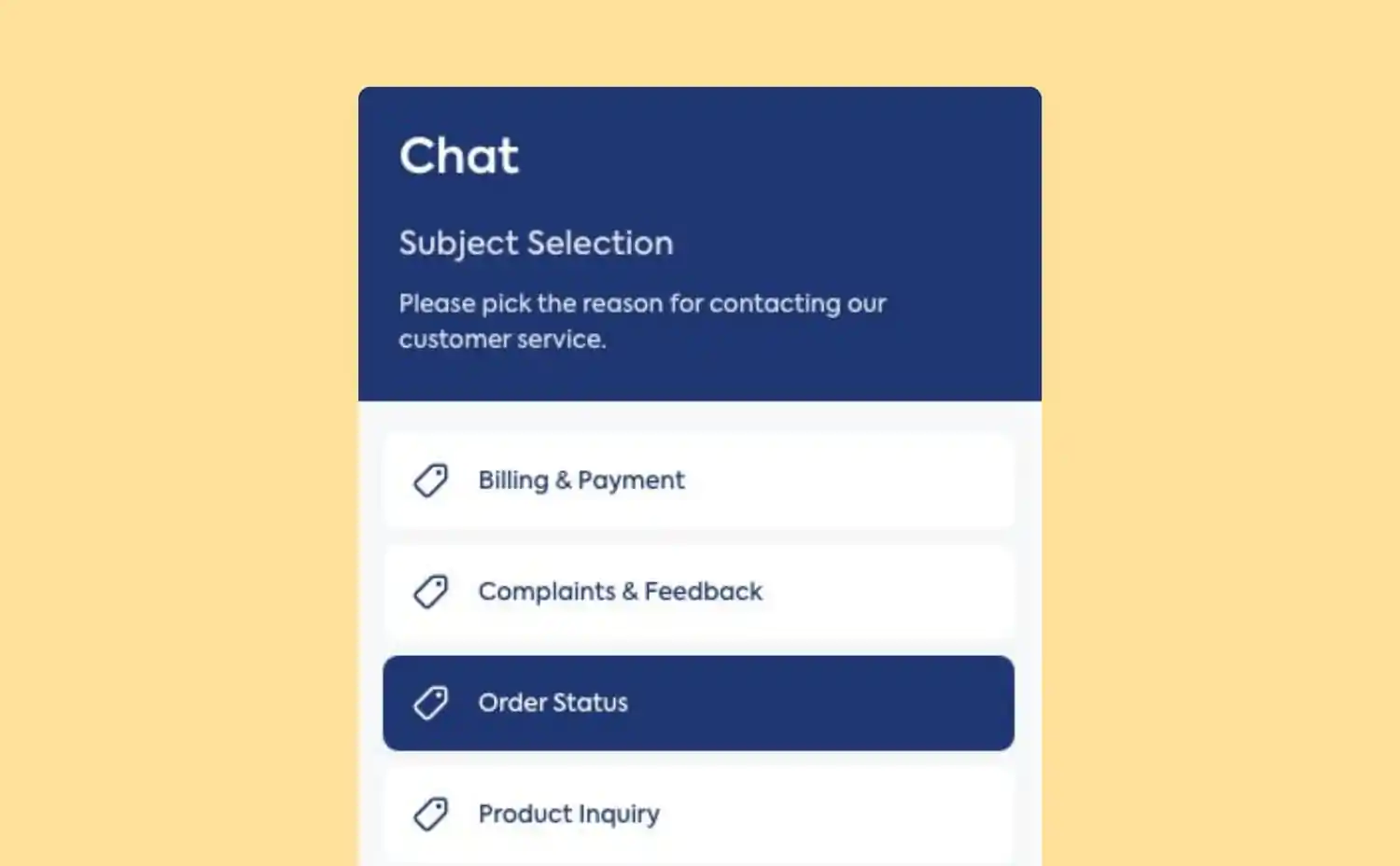Great CSAT doesn’t happen by accident. It’s the result of smart tech, smarter teams, and a whole lot of listening.
With these 10 tools and tactics, your contact center will meet expectations and raise them.
Whether you’re using a leading contact center software or exploring new AI-powered contact center solutions, these strategies have you covered.
1. Use Real-Time Sentiment Analysis
In customer support, no matter what the issue is, the agent should first tune into the customer’s emotional state. If the customer is angry, calm them down. If they’re confused, guide them through the problem together.
But doing this manually takes a lot of effort. Your agents shouldn’t have to carry both the technical and emotional load.
With the help of new technologies, you can detect a customer’s emotional state in real time and create specific response protocols for each scenario. That way, your support team always knows exactly how to respond.
Sentiment analysis was developed exactly for this matter. They can detect vocal cues such as frustration, joy, and confusion, and enable agents to respond in the moment.
Plus, sentiment analysis gives managers live insights and alerts for each call, and they can intervene whenever they need.
2. Give the Customer What They Expect
It is really frustrating for customer to explain their problem over and over again. Ideally, they want to explain the trouble to your agent only once and get the solution or at least the path to the solution right away.
Intelligent routing can be lifesaving in that manner. This technology lets you connect customers to the best person for the job based on expertise and history. So your agents are free from directing the customer to the right agent or supervisor. It is both time and contact center performance saving. Simply because the result would always be less friction and more satisfaction.
3. Omnichannel is Your Only Chance
If your company has a social media presence, you should provide direct customer support through it. Because today’s customers expect that. When you redirect them to email or another platform, you’re basically asking them to jump through extra hoops just to get help. And that extra effort eats into your CSAT score.
Besides, if each of your social media support channels operates on a separate system, your customer service team will struggle to keep up with messages and resolve issues efficiently. If you want quick resolutions and happy customers, you’ve got to make things easier for your agents.
With omnichannel communication, all those touchpoints come together in one view. It’s like texting your friend, then picking up the convo over coffee, no awkward rehashing.
4. Let Bots Handle the Repetitive Stuff BUT…
No one wants to talk to a chatbot about complex issues, but also no one wants to wait 5 minutes for a human to answer a “what’s my delivery status?” either.
The rule here is that if a problem can be solved with straightforward information, then there’s no harm for call center automation and leaving repetitive tasks to the bots. Your agents shouldn’t be bogged down answering FAQs.
BUT the most important point is that those bot responses need to be short, clear, and to the point. If your bot is throwing long, wordy help articles at customers, that’s not smart automation, it’s just a digital brush-off.
5. Catch Problems Before Customers Do
Do you want to see what is broken in your support?
Do you need to see red flags like high transfer rates, unusually long resolution times, or repeat tickets from the same customers?
Then use customer experience analytics and CX insights tools to monitor patterns across your support channels.
Once you’ve got the data, turn insights into action:
- Create alerts when wait times spike.
- Flag issues that lead to escalations.
- And keep a live dashboard so your team can jump on problems before they mess with customer satisfaction.
6. Coach Agents Like a Pro Sports Team
If you don’t actively support your agents’ growth and help them work through challenges, burnout is inevitable and can occur quickly. That’s not just bad for their well-being; it’s also bad for your customer relationships.
In customer service teams without strong coaching, turnover runs high. You end up spending more time and money hiring and training replacements instead of investing in the people you already have.
With agent coaching tools and AI-powered insights, you can zoom in on what’s working and where there’s room to grow. Think of it as an instant replay for customer engagement.
7. Turn Feedback into a Cheat Code for Improvement
We do not keep this section long because it is crystal clear: You need feedback, and you need it deadly
When customers give feedback, they are basically telling you how to win them over. You just need to listen.
Use post-call surveys, customer feedback analysis, and auto-scoring to make it easy to spot trends. It is the only way to learn what really matters for your customer. Welcome the democracy, so to speak.
8. Layer Voice and Sentiment Data for 3D Insights
Most contact centers only rely on what customers say (the words) in support interactions. But what they really feel often hides in their tone, pacing, and emotional delivery.
By combining voice analytics (tone, stress, pitch) and sentiment analysis (the actual words used), you get a layered, more accurate understanding of a customer’s emotional state.
This helps you:
- Detect hidden frustration or sarcasm masked by polite words.
- Flag at-risk customers even when the transcript looks “fine.”
- Give agents better, more nuanced coaching.
- Trigger smarter, in-the-moment interventions by supervisors.
9. Track Metrics in Real Time, Not Real Late
Waiting for weekly reports to find out CSAT dipped is like checking the weather after you’ve been rained on.
Using real-time reporting dashboards gives leaders live visibility into what’s happening. That means quicker decisions, faster fixes, and less damage control.
If you’re serious about KPI optimization, this kind of visibility is non-negotiable.
10. Stay Flexible with Cloud-Based Platforms
Choose the cloud-based contact center solutions because they are quick to deploy, easy to update, and ready to scale as you grow.
In fast-moving markets, that flexibility keeps you one step ahead of rising customer expectations and makes your team more resilient to change.
Last Words
Whether you’re improving agent performance or modernizing your contact center software stack, these strategies can help drive customer engagement and improve overall call center performance.
Want a real-world example?
Just request your personal demo and let us explain how Call Center Studio helps brands turn these strategies into action.






